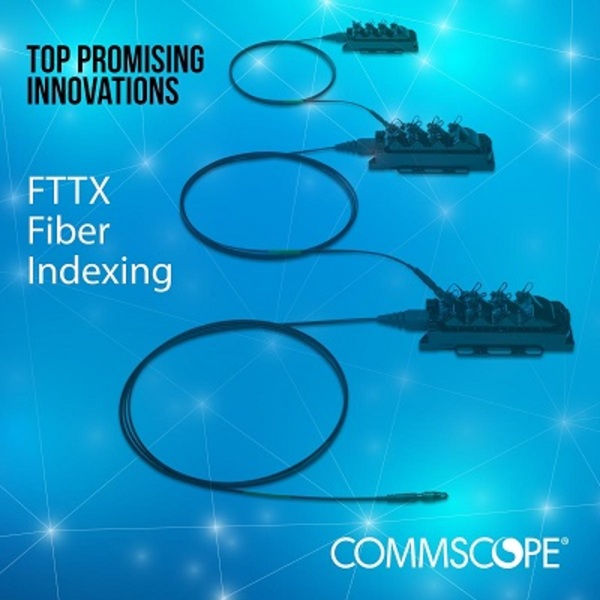Note: Last year, we unveiled our top 40 innovations made by CommScope or one of its acquired companies. This recognition was part of our 40th anniversary celebration. We are proud of all our innovations—past and present. Now, we look to new innovations that we hope will become the essential building blocks for the networks of the future. In a series of blogs, we will introduce you to our Top Promising Innovations in the world of wireless and fiber optics. We believe these innovations have the potential to have significant impact on the industry, much like some of the others from our past.
Fiber Indexing System
Definition: The fiber indexing system uses hardened connectivity and 12-strand fiber cables in the outside plant environment. Indexing eliminates splicing and enables faster, plug-and-play installation of fiber and terminals for FTTx (Fiber to the X) deployments.
Year of Innovation: 2016
What is the innovation that CommScope was first in creating?
CommScope’s fiber indexing portfolio is a solution for deploying FTTx in areas with high labor costs for splicing. Fiber indexing eliminates the need for splicing by offering a plug-and-play solution. This allows operators to use any level of skilled technicians (saving costs) and to deploy FTTx quicker than they could if they had to splice all connections. Traditionally, FTTx deployments used one of two topologies:
- Star topology — Fiber splicing is done at the hub where individual cables are placed from the hub to each terminal.
- Daisy-chain topology — Fiber cable is spliced through multiple hardened terminals. This forces significant compromises in deployment time while increasing costs and the need for expensive, specialized labor.
These typical FTTx deployments require extensive engineering and field measurement prior to deployment, and require heavy involvement of skilled fiber technicians during the construction phase. This drives up the cost and reduces the speed at which operators can deploy FTTx networks.
Fiber indexing combines the best attributes of both topologies to create a no-splice option that greatly reduces deployment time and cost. Factory pre-terminated connectivity eliminates the need for splicing in the field. Starting with the first indexed terminal, which supports multiple drop cables, the connectorized fiber cable stub is connected to the fiber distribution hub. From there, subsequent indexed terminals are daisy-chained together in a linear topology. Rather than requiring custom cable lengths and splicing labor, fiber indexing is a cookie-cutter approach to FTTx deployments.
What was happening in the market that this innovation was needed?
Carriers are in a race to deploy FTTx and offer 1 Gigabit service to their customers. Fiber indexing speeds up FTTx deployments because it’s a plug-and-play solution, and it allows operators to save labor costs because they don’t have to use expensive splicing crews.
How does this innovation benefit customers and the industry?
Fiber indexing can reduce deployment time by up to 75 percent by eliminating splicing. In addition, it minimizes cable lengths for up to 70 percent savings, eliminates cable congestion at the Fiber Distribution Hub, and simplifies inventory management by reducing the number of discrete components needed.
What makes this a promising innovation for future networks and customer applications?
Speed of deployment and the standardized, cookie-cutter approach will speed rollouts of FTTx networks. As FTTx networks continue to spread around the world, fiber indexing may become a standard method of deployment, particularly in areas with high splicing costs.
What are some of the early marketplace successes for this innovation?
There have been successful field trials by major service providers in multiple regions on multiple continents, which are encouraging precursors to broad customer acceptance and rapid growth.
What is the significance of the innovation for CommScope?
Fiber indexing expands CommScope’s reputation and credibility as an innovator in fiber solutions for FTTx deployment. This adds another option for customers who want to minimize deployment time and costs, and increases the total number of available CommScope solutions. CommScope can supply spliced as well as plug-and-play fiber networks, and its breadth of solutions makes it a leader in the market.
Does the innovation follow any established industry standards or do you believe it might set a precedent for its own?
The fiber indexing system follows all existing standards for fiber networking connectivity.
How do you see this innovation evolving?
Over time, the fiber indexing portfolio will likely support higher fiber counts, point-to-point fiber options, and the ability to use dedicated fibers to premises instead of using 1:4 or 1:8 splitters. These options will expand the applications for network operators, and will allow them to meet a broader range of subscriber needs.








